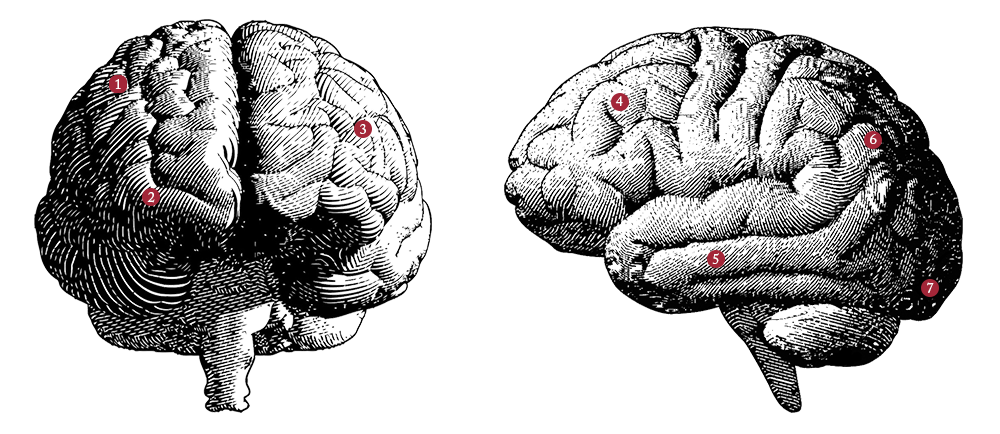4 Situated at the very front of the brain, the prefrontal cortex stores information in the working memory and controls selective attention, allowing humans to focus on a text.

1 Located in the parietal lobe, the angular gyrus facilitates communication between different parts of the brain, permitting humans to simultaneously recognize, understand, and remember words on a page.
2 The fusiform gyrus is important in the recognition of familiar shapes in different contexts, such as that of letters and words, regardless of typeface, weight, and capitalization.
3 Crucial for speech function, Broca’s area, in the brain’s left hemisphere, allows humans to read out loud and also plays a role in language comprehension.
5 Embedded deep inside the temporal lobe, the hippocampus forms explicit, nonemotional memories, allowing humans to recall facts learned from reading a book long after they finish it.
6 Governing the comprehension of spoken and written words, the structure known as Wernicke’s area is believed to translate meaningless phonemes such as l, o, and ve into meaningful words like love.
7 Connected to the eyes by optic nerves, the visual cortex detects, processes, and recognizes visual information from the outside world.